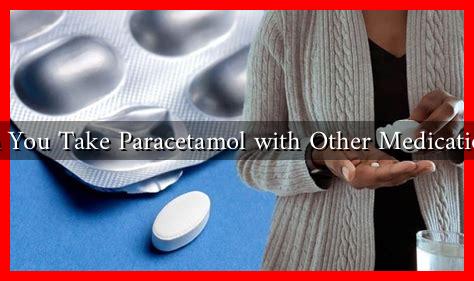-
Table of Contents
Can You Take Paracetamol with Other Medications?
Paracetamol, also known as acetaminophen, is one of the most commonly used over-the-counter medications for pain relief and fever reduction. While it is generally considered safe when taken as directed, many people wonder about its interactions with other medications. This article explores the compatibility of paracetamol with various drugs, potential risks, and guidelines for safe use.
Understanding Paracetamol
Paracetamol is widely used due to its effectiveness and relatively low side effect profile. It works by inhibiting the production of prostaglandins in the brain, which are chemicals that promote inflammation, pain, and fever. According to the World Health Organization (WHO), paracetamol is included in the list of essential medicines, highlighting its importance in healthcare.
Common Medications That Can Interact with Paracetamol
While paracetamol is generally safe, certain medications can interact with it, leading to increased risks of side effects or reduced effectiveness. Here are some common categories of medications to be aware of:
- Anticoagulants: Medications like warfarin can have their effects altered when taken with paracetamol. Studies have shown that high doses of paracetamol may increase the risk of bleeding.
- Antiepileptics: Drugs such as phenytoin and carbamazepine can affect liver enzymes that metabolize paracetamol, potentially leading to toxicity.
- Other Pain Relievers: Combining paracetamol with non-steroidal anti-inflammatory drugs (NSAIDs) like ibuprofen is generally safe, but it is essential to monitor total dosages to avoid overdose.
- Alcohol: Chronic alcohol consumption can increase the risk of liver damage when taking paracetamol, as both substances are metabolized in the liver.
Case Studies and Statistics
Research indicates that paracetamol is involved in a significant number of drug-related liver injuries. A study published in the Journal of Hepatology found that paracetamol was responsible for approximately 50% of acute liver failure cases in the United States. This statistic underscores the importance of understanding how paracetamol interacts with other medications.
In another case, a 2018 study highlighted the risks associated with combining paracetamol and warfarin. The research indicated that patients taking both medications had a 30% higher risk of major bleeding events compared to those taking warfarin alone. This finding emphasizes the need for careful monitoring and consultation with healthcare providers.
Guidelines for Safe Use of Paracetamol
To minimize the risks associated with taking paracetamol alongside other medications, consider the following guidelines:
- Consult Your Doctor: Always discuss your current medications with your healthcare provider before starting paracetamol.
- Read Labels: Many over-the-counter medications contain paracetamol. Be cautious to avoid unintentional overdose.
- Monitor Dosage: The maximum recommended dose for adults is typically 4,000 mg per day, but lower limits may be advisable for those with liver issues or chronic alcohol use.
- Be Aware of Symptoms: Watch for signs of liver damage, such as jaundice, dark urine, or abdominal pain, and seek medical attention if they occur.
Conclusion
Paracetamol is a widely used medication that can be safely taken with many other drugs, but caution is necessary. Understanding potential interactions, especially with anticoagulants, antiepileptics, and alcohol, is crucial for preventing adverse effects. Always consult with a healthcare professional before combining paracetamol with other medications to ensure safe and effective use. By following the guidelines outlined in this article, you can make informed decisions about your health and medication regimen.




